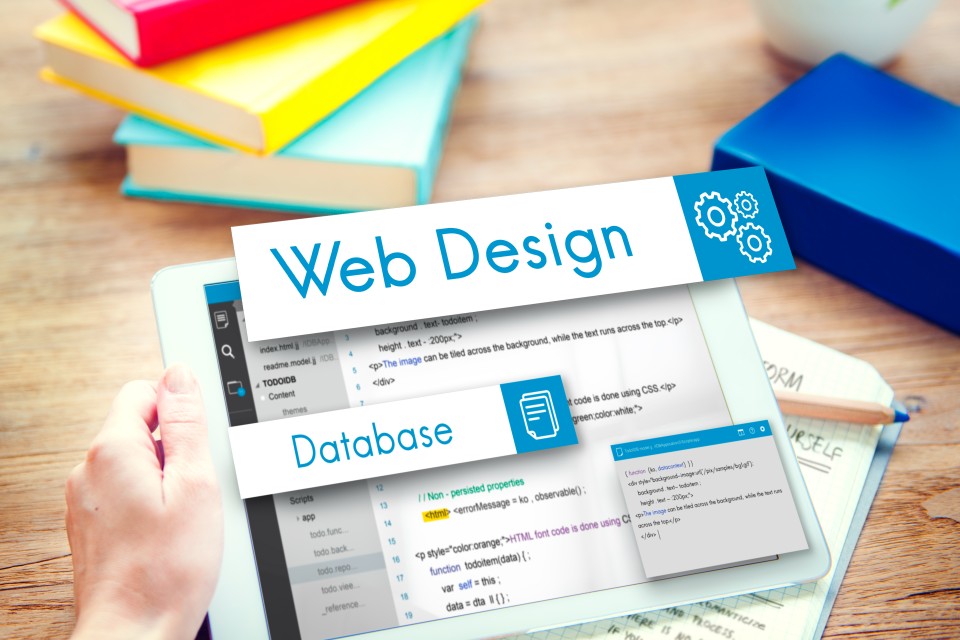
In the fast-paced digital era, keeping your online presence fresh and engaging is essential. A website redesign is not merely a cosmetic makeover but a strategic initiative to improve user experience, align with business objectives, and stay ahead in the competitive digital landscape. In this in-depth guide, we’ll take you through the nuanced process of a successful website redesign, covering everything from initial assessment to post-launch strategies.
I. Assessing the Current Website
1. Conducting a Thorough Website Audit
Embarking on a website redesign begins with a deep dive into your current online landscape. Utilize tools like Google Analytics to extract quantitative insights into user behaviour, traffic patterns, and page performance. Simultaneously, engage with your audience through qualitative methods such as user surveys and feedback forms. This dual approach ensures a comprehensive understanding of what’s working and what needs improvement.
Understanding Data Insights: Metrics such as bounce rates and average session duration provide a window into user engagement. Identifying high-performing pages can guide your focus during the redesign process, leveraging successful elements for broader application.
Enhancing User Engagement: Qualitative insights gleaned from user feedback offer a human touch to your analysis. Identify pain points and user preferences to tailor the redesign to meet actual user needs.
II. Defining Goals and Objectives
2. Setting Clear Objectives for the Redesign
Every redesign should have a purpose. Whether you’re aiming to streamline navigation, increase conversion rates, or refresh your visual identity, these objectives should align seamlessly with broader business goals. This alignment ensures that your redesign isn’t just aesthetically pleasing but contributes tangibly to your overall business success.
Strategic Alignment: Before diving into the redesign process, articulate how each objective ties into your business strategy. This clarity ensures that every design choice has a purpose beyond aesthetics.
Balancing Short-Term and Long-Term Goals: Consider the balance between short-term wins and long-term strategic objectives. Prioritize objectives that yield immediate benefits while contributing to sustained growth.
III. Planning the Redesign Process
3. Creating a Realistic Timeline
A well-orchestrated redesign requires careful planning and pacing. Break down the process into manageable phases, allocating realistic timeframes for each. This approach not only prevents burnout but also allows for thorough testing and revisions, ensuring a polished end result.
Phased Approach: Dividing the redesign into distinct phases, such as planning, design, development, and testing, enables a systematic approach. Allocate sufficient time for each phase to avoid rushed decisions.
Buffer for Unforeseen Challenges: Unforeseen challenges are inevitable in any complex project. By incorporating buffer time in your timeline, you provide your team with the flexibility to address unexpected roadblocks without compromising quality.
4. Establishing a Budget for the Redesign
Budgeting is a critical aspect of any redesign project. Identifying potential costs, including design, development, and testing, is crucial. Additionally, factor in ongoing maintenance expenses to ensure the sustainability of your revamped website.
Holistic Cost Assessment: Beyond design and development, consider costs related to hosting, domain, and ongoing maintenance. A holistic view of expenses ensures that your budget is comprehensive.
Contingency Planning: Overestimate rather than underestimate costs to accommodate any unexpected expenses that may arise. A contingency fund prevents financial strain if unforeseen challenges emerge during the redesign process.
IV. User-Centric Design
5. Understanding the Target Audience
User-centric design is at the core of a successful website redesign. Develop detailed user personas based on demographics, preferences, and pain points. This approach provides a human touch to the redesign, ensuring that it resonates with your target audience.
User Persona Development: Create detailed user personas that go beyond demographics to capture user motivations, goals, and challenges. These personas serve as a compass throughout the redesign process.
Adapting to User Feedback: Regularly solicit and incorporate user feedback. Actively involving your audience in the redesign process ensures that the final product addresses their evolving needs.
6. Implementing a Mobile-First Approach
With the dominance of mobile users, adopting a mobile-first design strategy is non-negotiable. Prioritize a seamless experience on various devices, with a particular emphasis on mobile optimization.
Responsive Design Essentials: Ensure that your website is not only responsive but optimized for different devices and screen sizes. A consistent experience across platforms is crucial for user satisfaction.
Testing Across Devices: Rigorous testing on different devices and browsers is essential. Identify and address any usability issues to guarantee a positive experience for users, regardless of their chosen device.
V. Content Strategy
7. Evaluating Existing Content
Content is the lifeblood of your website. Evaluate the performance of existing content by analyzing metrics such as page views, time on page, and bounce rates. Identify content that resonates with your audience and weed out outdated or irrelevant material.
Metrics-Driven Content Assessment: Leverage analytics tools to assess the performance of each piece of content. Metrics such as engagement rates and conversion metrics provide insights into content effectiveness.
User-Driven Content Optimization: Pay attention to user-generated content, comments, and discussions. User-generated content often highlights areas of interest and provides valuable feedback for content optimization.
8. Planning for New, Engaging Content
A successful redesign is an opportunity to breathe new life into your content strategy. Create a content calendar aligned with your redesign timeline, focusing on creating fresh, engaging content that not only tells your brand story but also enhances your website’s SEO.
Strategic Content Calendar: Plan your content calendar strategically, aligning content releases with key milestones in the redesign process. This ensures that your content rollout complements the overall user experience.
Multimedia Integration: Explore the integration of multimedia elements such as videos, infographics, and interactive content. These elements not only diversify your content but also contribute to a richer, more engaging user experience.
VI. Visual Design and Branding
9. Updating the Visual Identity
Refreshing your website’s visual identity is more than just changing colors and fonts. It involves a holistic reassessment of your brand aesthetics. Update the color palette, typography, and incorporate new design elements while ensuring alignment with current design trends.
Inspiration from Design Trends: Draw inspiration from contemporary design trends while maintaining a unique and recognizable visual identity. Striking this balance ensures that your website feels current without sacrificing brand consistency.
Stakeholder Collaboration: Involve key stakeholders in the design decision-making process. Their input ensures that the redesigned visual identity resonates with the overall organizational vision.
10. Maintaining Brand Consistency
Brand consistency is the linchpin of a successful website redesign. Ensure that the revamped website aligns seamlessly with your brand guidelines, providing a familiar and trustworthy experience for existing users.
Style Guide Development: Create a comprehensive style guide that outlines design elements, brand colours, and typography. This guide serves as a reference for both internal and external contributors, ensuring consistency.
User Familiarity: Strive for a balance between innovation and user familiarity. While the redesign may introduce fresh elements, maintaining recognizable brand elements ensures a smooth transition for existing users.
VII. Navigation and User Flow
11. Improving Website Navigation
Website navigation is the backbone of a positive user experience. Simplify menu structures and enhance the user journey through the site. Conduct usability testing to identify pain points and optimize navigation for an intuitive experience.
User Journey Mapping: Map out the user journey through your website. Understanding how users move from entry to conversion points allows for strategic optimization of navigation elements.
Usability Testing Insights: Usability testing provides invaluable insights into user behavior. Identify areas where users encounter difficulties or confusion, and use these insights to streamline navigation.
12. Implementing Clear Calls-to-Action
Clear calls-to-action (CTAs) are instrumental in guiding users toward desired actions. Optimize buttons and links for conversions, ensuring that users are prompted to take specific actions at strategic points throughout the site.
Strategic CTA Placement: Analyze user pathways and strategically place CTAs where they align with user intent. Whether it’s making a purchase, subscribing, or exploring further, CTAs should facilitate a seamless user journey.
A/B Testing for Optimization: Implement A/B testing for different CTA variations. This iterative approach allows you to refine and optimize CTAs based on real user interactions, improving conversion rates over time.
VIII. Testing and Quality Assurance
13. Conducting Usability Testing
Usability testing is the litmus test for the success of your redesign. Involve real users to provide qualitative feedback on the user experience. Address identified issues promptly to refine and improve the website before the official launch.
Real User Interaction Insights: Genuine user interactions uncover nuances that may be missed in internal testing. Observing how users navigate your redesigned site provides actionable insights for improvements.
Iterative Testing: Usability testing should be an iterative process, conducted at different stages of the redesign. Early testing catches fundamental issues, while later testing refines the user experience based on evolving design elements.
14. Cross-Browser and Device Testing
The digital landscape is diverse, with users accessing websites on various browsers and devices. Ensure consistent performance by conducting thorough testing across different platforms. Identify and resolve compatibility issues to guarantee a seamless experience for all users.
Diversity in Testing Environments: Test your website on a diverse range of browsers, including popular choices like Chrome, Firefox, Safari, and Edge. Additionally, test on various devices, covering different screen sizes and resolutions.
Automated Testing Tools: Leverage automated testing tools to streamline the process. These tools can catch potential issues early in development, allowing for proactive problem-solving before the official launch.
IX. Launch and Post-Launch Strategies
15. Planning for a Smooth Launch
The launch phase is a critical juncture in the redesign process. Communicate changes to your users through various channels, such as email newsletters and social media. Simultaneously, monitor website performance closely post-launch, addressing any unexpected issues promptly.
Transparent Communication: Keep your audience informed about the upcoming changes. Transparent communication builds anticipation and prepares users for the redesigned experience.
Post-Launch Monitoring: Actively monitor website performance in the initial days post-launch. This monitoring allows you to identify and address any unexpected issues promptly, ensuring a smooth transition for users.
16. Ongoing Maintenance and Updates
A successful website is not a static entity but a dynamic space that evolves with user needs and technological advancements. Regularly update content and features to keep your website fresh and relevant. Pay attention to user feedback and analytics data to identify areas for improvement and optimization.
Content Calendar for Regular Updates: Implement a content calendar that outlines regular updates to keep your website dynamic. Regular updates not only engage users but also contribute to SEO performance.
User Feedback Integration: Actively seek and integrate user feedback into your ongoing maintenance strategy. User insights provide a roadmap for continuous improvement, ensuring that your website evolves with user expectations.
Conclusion
In conclusion, a website redesign is a multifaceted process that demands meticulous planning and execution. By following these steps and incorporating the provided tips, you can breathe new life into your online presence. Embrace the opportunity to evolve and create a digital space that captivates and engages your audience, fostering lasting connections and driving success in the ever-evolving digital landscape.
At EmergingFreelancer.com, we specialize in crafting innovative and visually captivating web designs that elevate your online presence. Our dedicated team of skilled designers collaborates closely with clients to understand their unique brand identity, ensuring that each website is tailor-made to meet specific goals and engage target audiences effectively. From responsive layouts to intuitive navigation, we prioritize user-centric design, creating a seamless and enjoyable browsing experience. Whether you’re launching a new site or seeking a redesign, our services at EmergingFreelancer.com aim to transform your digital vision into a compelling and functional reality, leaving a lasting impression on visitors and driving success for your business.
